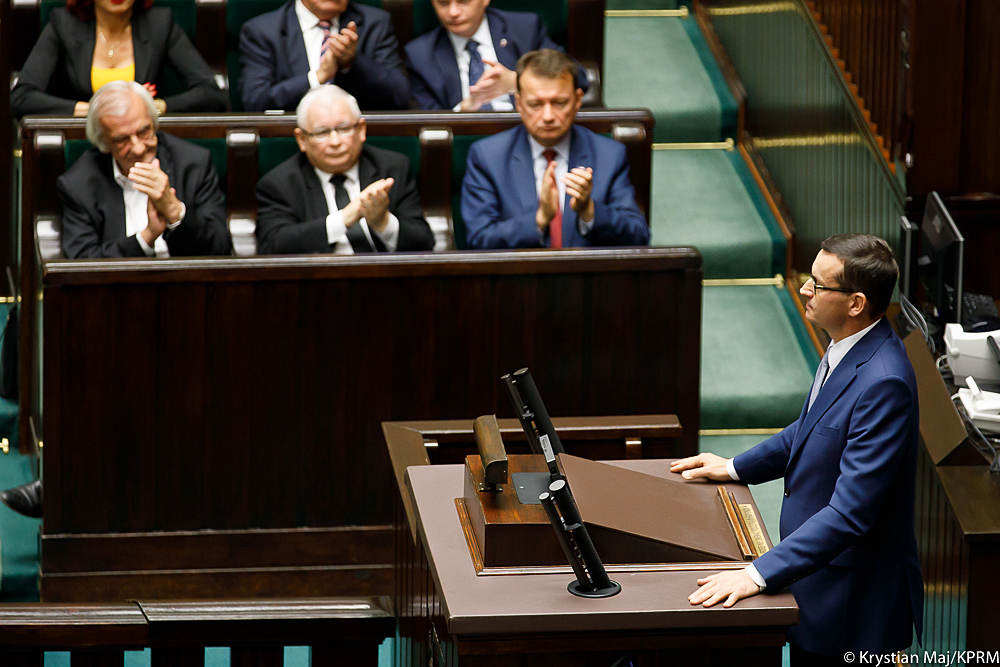Jarosław Kaczyński has quit the Polish government in order to focus fully on helping the ruling Law and Justice (PiS) party that he leads “regain its verve” ahead of parliamentary elections scheduled for autumn next year.
Though he formally only held the role of deputy prime minister, Kaczyński is widely acknowledged as the most powerful figure in Poland’s national-conservative United Right (Zjednoczona Prawica) ruling coalition.
Jarosław Kaczyński odchodzi z rządu https://t.co/6cRxtwdj0W
— PolsatNews.pl (@PolsatNewsPL) June 21, 2022
“I am not in the government anymore,” said Kaczyński today, quoted by Polsat News. “Prime Minister Mateusz Morawiecki and, as far as I know, President Andrzej Duda have accepted my resignation.” Earlier this month, the government’s spokesman had announced that Kaczyński would “soon” depart.
“I have decided to concentrate on what is most important for the future of Poland,” Kaczyński continued. “The party must regain its verve” in order to “obtain a good election result”, which “as far as PiS is concerned [means] winning and exercising power”.
Kaczyński will be replaced as deputy prime minister by Mariusz Błaszczak, the defence minister, who will also retain his current brief. The other three current deputy prime ministers – Piotr Gliński, Henryk Kowalczyk and Jacek Sasin – remain in place.
When PiS was previously in power, Kaczyński served as prime minister from 2006 to 2007. However, after the party returned to office in 2015, he initially chose to pull the strings from outside government, taking on no formal state position.
But in 2020, amid tension with junior partners in the ruling coalition, Kaczyński took on the role of deputy prime minister with responsibility for national security. He has retained that position until now, though maintaining a relatively low profile.
In his announcement today, Kaczyński noted that he had planned to leave the government four months ago, but decided to remain after Russia’s invasion of Ukraine.
He said that “important decisions [had to be] taken with regard to Poland avoiding a very difficult fate”, including “arming ourselves enough to make a possible attack on our country a completely irrational undertaking”.
In March, the government, with opposition support, introduced a new Homeland Defence Act that increases defence spending to 3% of GDP, one of the highest levels in NATO.
The legislation had first been presented by Kaczyński last year, when he said that it would help counteract “Russia’s imperial ambitions”. Kaczyński had previously warned a closed session of parliament that Russia had plans to invade Poland.
PiS remains by far the most popular party in Poland according to polls, with an average level of support of around 38%, roughly the proportion of the vote it received in the parliamentary elections of 2015 that brought it to power.
That victory, however, resulted in only a narrow majority in parliament, and a similar result would not guarantee PiS remaining in power. The largest opposition group, Civic Coalition (KO), trails on around 26% and its head, Donald Tusk, has been seeking to unite the opposition under his leadership.
Poland 2050 (Polska 2050), a relatively new centrist group, is in third with around 12% support. It is followed by The Left (Lewica) on 9% and the far-right Confederation (Konfederacja) with 6%. The agrarian Polish People’s Party (PSL) is hovering around the 5% threshold required to enter parliament.
Main image credit: Krystian Maj / KPRM

Daniel Tilles is editor-in-chief of Notes from Poland. He has written on Polish affairs for a wide range of publications, including Foreign Policy, POLITICO Europe, EUobserver and Dziennik Gazeta Prawna.




















